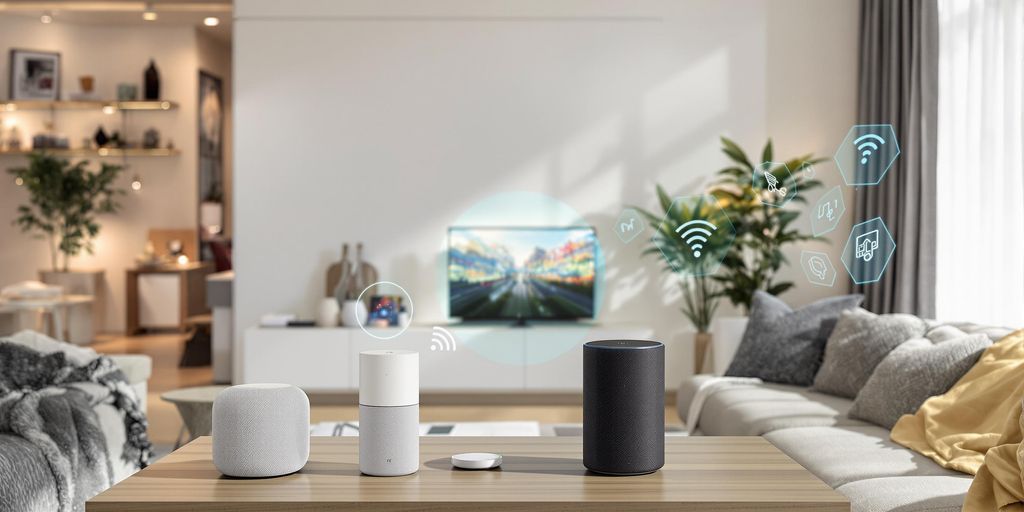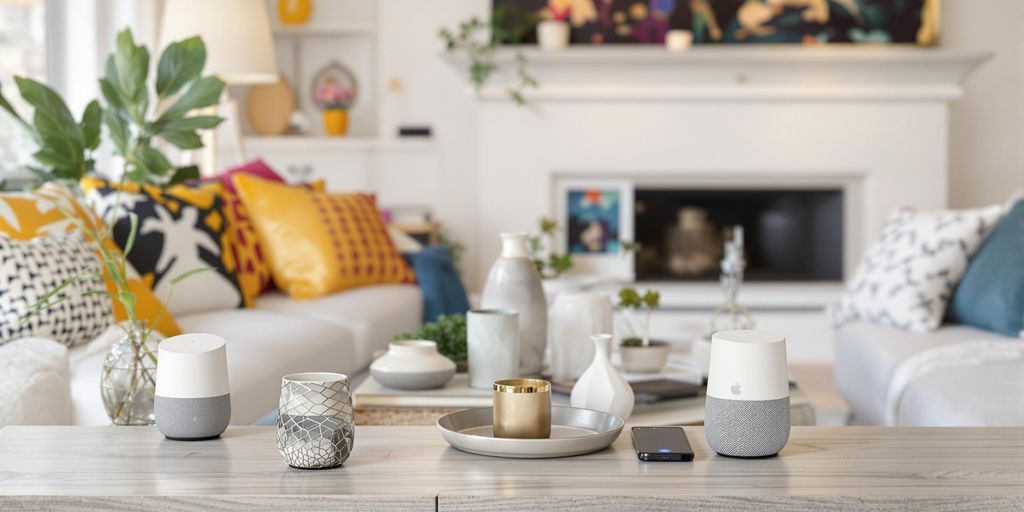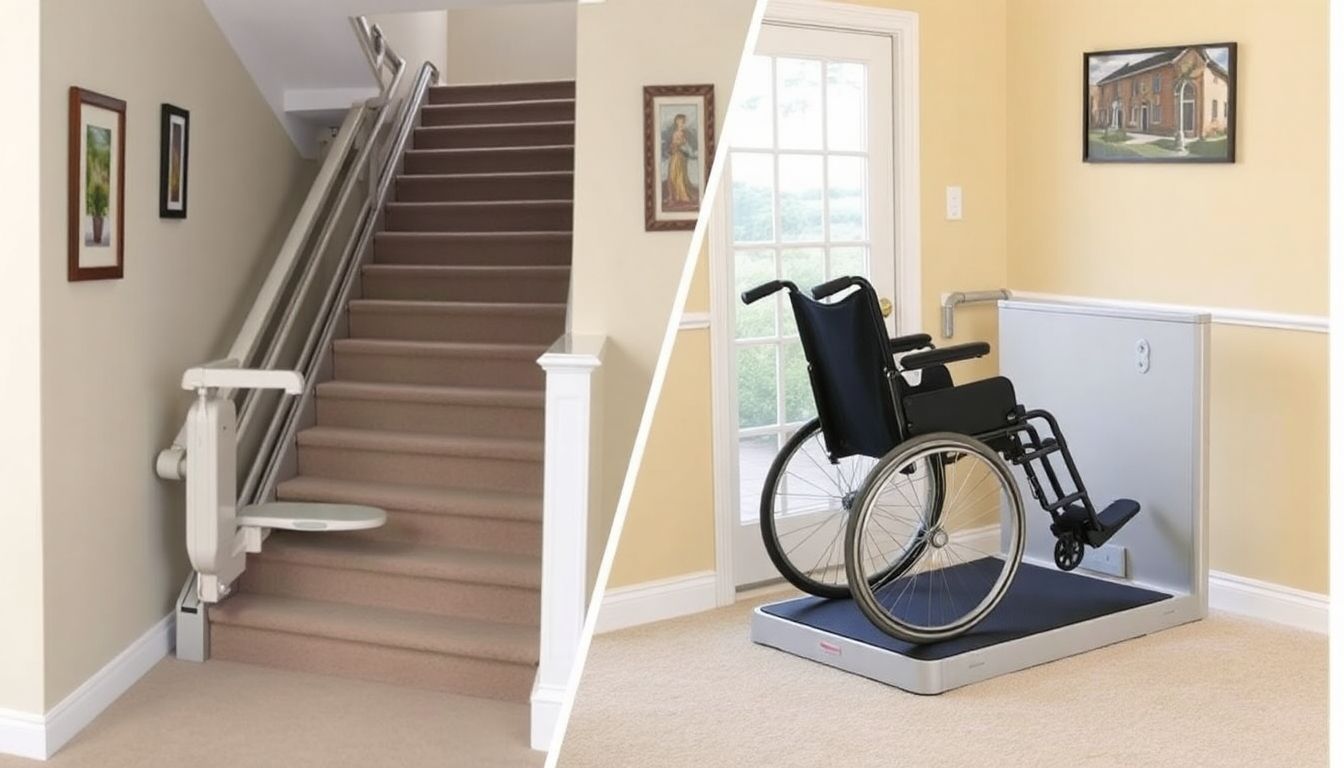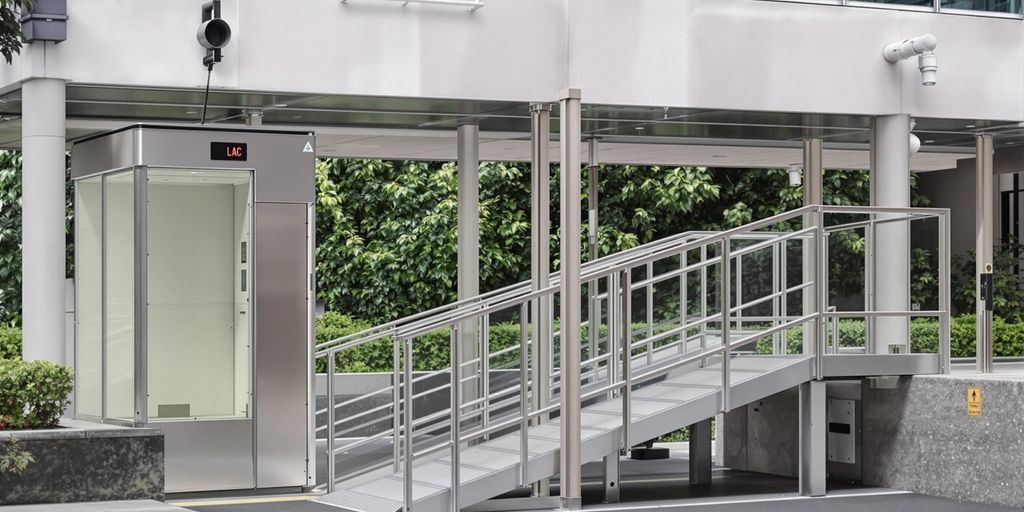Essential Setup Tips for Voice-Activated Home Systems in LaFayette


Setting up a voice-activated home system in LaFayette can feel like a big task, but it doesn’t have to be. Whether you’re looking to make life more convenient, improve safety, or just enjoy some cool tech, there’s a lot to gain. From choosing the right devices to making sure everything runs smoothly, a little planning goes a long way. Let’s break it down step by step so you can get started with confidence.
Key Takeaways
- Voice-activated systems can simplify daily tasks and improve accessibility for everyone.
- Safety features like smart sensors and emergency alerts add peace of mind.
- Customizing your setup ensures it fits your specific needs and lifestyle.
- Regular maintenance keeps your system running smoothly and efficiently.
- Planning your setup with a budget and professional help saves time and hassle.
Integrating Voice-Controlled Systems for Accessibility
Benefits of Voice-Activated Devices in Daily Life
Voice-activated devices are more than just tech gadgets—they are lifelines for many. They empower individuals with mobility challenges to control their environment effortlessly. Whether it's turning on the lights, adjusting the thermostat, or locking the doors, these devices simplify daily tasks. They can also serve as reminders for medications, appointments, or even grocery lists, making life smoother and more organized.
Top Voice-Controlled Systems for Homes in LaFayette
If you're in LaFayette and considering voice-controlled systems, here are some top picks:
- Amazon Alexa: Known for its compatibility with a wide range of smart home devices.
- Google Assistant: Offers robust voice recognition and seamless integration with Google services.
- Apple HomeKit: A great option for Apple users, focusing on privacy and ease of use.
Each of these systems can be tailored to fit your specific needs, whether you're looking for entertainment, security, or convenience.
How to Set Up Voice Commands for Maximum Efficiency
Getting started with voice commands is easier than you think. Here’s a quick guide:
- Choose Your Ecosystem: Decide which system (Alexa, Google, or HomeKit) aligns with your current devices.
- Set Up Routines: Automate repetitive tasks like turning off all lights at bedtime with a single command.
- Customize Commands: Use personalized phrases for unique actions, like "Good Morning" to adjust lights and play the news.
A well-configured voice-controlled system doesn’t just make life easier—it gives you back time and independence. Start small, and expand as you grow more comfortable with the technology.
Enhancing Safety with Smart Home Features
Using Smart Sensors for Home Monitoring
Smart sensors are like having an extra set of eyes around the house. These devices can detect smoke, carbon monoxide, or even water leaks. What’s great is they send instant alerts to your smartphone or a connected device, so you know about issues the moment they happen. Some advanced systems can even notify family members or caregivers, offering peace of mind when you’re not home.
Here’s how to make the most of them:
- Install smoke and carbon monoxide detectors in key areas like the kitchen and bedrooms.
- Place water leak sensors near sinks, washing machines, and water heaters.
- Pair your sensors with a central smart home hub for better control and monitoring.
Smart sensors are a simple yet effective way to add a layer of safety to your home.
Automated Lighting for Improved Safety
Walking through a dark house can be risky, especially for those with mobility challenges. Automated lighting systems can solve this by lighting up pathways as soon as motion is detected. You can also schedule lights to turn on and off at specific times, which is handy when you’re away and want to make it look like someone’s home.
Key features to consider:
- Motion-activated lights for hallways and staircases.
- Dimmable options for creating a comfortable environment.
- Integration with voice assistants for hands-free control.
Automated lighting doesn’t just make your home safer—it adds convenience to your daily routine.
Emergency Alerts and Notifications for Caregivers
For families with elderly members or individuals with health concerns, emergency alert systems can be lifesaving. These systems can send notifications during emergencies like falls or medical issues. Some even come equipped with wearable devices that allow users to call for help with the press of a button.
Steps to set up an efficient system:
- Choose a system that includes wearable devices for ease of access.
- Ensure it’s connected to your smartphone or a caregiver’s device.
- Test the system regularly to make sure it’s functioning properly.
Having an emergency alert system in place can provide a sense of security for both residents and their loved ones.
Customizing Smart Home Technology for Individual Needs
Tailoring Smart Devices for Mobility Challenges
Adapting smart technology for mobility needs can make a world of difference. For example, devices like smart door locks and automated curtains can be controlled through voice or apps, reducing the need for physical movement. Here’s what to consider:
- Smart Locks: These let you lock and unlock doors without fumbling for keys. Great for people who use wheelchairs or have limited hand dexterity.
- Automated Curtains: Open and close them with a simple command or schedule, ensuring privacy and light control.
- Voice-Controlled Thermostats: Adjust the temperature without having to reach for a dial.
Incorporating Accessibility Features into Smart Systems
Accessibility doesn't stop at mobility—it includes sensory and cognitive support too. Smart systems can be customized to assist with various challenges:
- Voice Reminders: Set up reminders for medications or appointments.
- Bright Lighting Adjustments: Ensure rooms are well-lit, using smart bulbs that respond to voice or app commands.
- Alerts and Notifications: Sensors can send alerts for smoke, water leaks, or even when someone enters the home.
A well-designed smart system isn’t just convenient; it’s a lifeline for those needing extra support.
Choosing the Right Smart Home Hub
Picking the right hub is crucial because it’s the brain of your smart home. Here’s how to make the best choice:
- Compatibility: Check if it works with your existing devices like lights, locks, and speakers.
- User-Friendliness: Opt for a hub with a simple interface, especially if multiple family members will use it.
- AI Capabilities: Advanced hubs can learn your habits and automate routines, like dimming lights or locking doors at bedtime.
Customizing your smart home isn’t just about gadgets; it’s about creating a space that works for you. Whether you need help with mobility, memory, or just want a more connected home, these tips can guide you to a smarter, easier life.
Maintaining and Upgrading Your Voice-Activated System
Regular Maintenance Tips for Longevity
Keeping your voice-activated system in good shape isn’t rocket science, but it does take a little effort. Regular upkeep ensures everything runs smoothly and prevents those annoying glitches when you need your system the most. Here's a quick checklist to keep things in order:
- Clean your devices regularly. Dust and dirt can block microphones or speakers, reducing the system's responsiveness.
- Update the software. Manufacturers often release updates to fix bugs or improve functionality, so don’t skip those notifications.
- Check your Wi-Fi connection. A weak or unreliable network can cause delays or failures in executing commands.
Proactive maintenance can save you from the frustration of troubleshooting when things go wrong.
When to Upgrade Your Smart Home Features
Sometimes, maintaining isn’t enough. Technology moves fast, and your system might feel outdated before you know it. Here’s how to tell it’s time for an upgrade:
- Your system struggles with new commands. If your device can’t handle newer features or integrations, it’s likely time to replace it.
- Compatibility issues arise. Older systems may not work well with newer smart home gadgets.
- Voice recognition falters. If your system frequently misunderstands you, newer models with improved AI might be the solution.
Consider adding features like smart home voice control for a more integrated and seamless experience.
Troubleshooting Common Issues in Voice-Controlled Systems
Even the best systems encounter hiccups. Here are some common problems and quick fixes:
- Device not responding? Check if it’s plugged in and powered on.
- Commands misunderstood? Ensure the microphone isn’t blocked and speak clearly.
- Slow response times? Restart your router or place the device closer to your Wi-Fi source.
If these don’t work, a factory reset often resolves deeper issues. Just remember to back up your settings beforehand.
A little patience and some basic troubleshooting can go a long way in keeping your system functional.
Planning Your Smart Home Setup in LaFayette
Assessing Your Home’s Layout for Smart Integration
Before diving into smart home tech, take a good look at your home’s layout. Are there areas where Wi-Fi struggles? Do you have enough power outlets for new devices? These small details matter when planning a system that works seamlessly. Think of your smart home as a team—each device needs to communicate effectively.
Here’s how to assess your space:
- Identify "dead zones" where Wi-Fi doesn’t reach.
- Check if your current electrical setup can handle additional gadgets.
- Map out high-traffic areas for placing voice assistants or smart hubs.
Budgeting for Smart Home Upgrades
Setting up a smart home doesn’t have to break the bank, but it’s important to budget wisely. Start with the essentials and expand as you go. Focus on what will improve your daily life most.
Consider these tips:
- Prioritize devices that solve specific problems, like smart thermostats for energy savings.
- Compare prices and features across brands—don’t just go for the big names.
- Allocate funds for professional installation if needed.
Consulting Professionals for Seamless Installation
Let’s be honest—setting up a smart home can get tricky, especially if you’re dealing with wiring or network configurations. This is where pros come in handy. They’ll not only save you time but also ensure everything works as it should.
What to expect from professional help:
- A thorough evaluation of your home’s tech needs.
- Recommendations tailored to your lifestyle.
- Proper installation and troubleshooting to avoid headaches later.
A well-planned smart home setup isn't just about cool gadgets—it's about creating a space that works for you. Whether you’re starting small or going all-in, planning ahead will make all the difference.
Maximizing Comfort with Smart Home Automation
Automating Climate Control for Energy Efficiency
Automating your home's climate isn’t just about staying comfortable; it’s also about cutting down on energy bills. Smart thermostats, like the ones that integrate with HVAC systems, are a game-changer. You can program them to adjust the temperature based on your daily routine. For example, lower the heating or cooling when you're out and have it kick back on before you return. Some models even have eco-modes that balance comfort with energy savings.
Steps to get started with smart climate control:
- Choose a thermostat compatible with your HVAC system. Smart thermostats enhance HVAC systems by delivering precise comfort levels and reducing energy consumption.
- Install it yourself or hire a pro if wiring isn’t your thing.
- Set up schedules and explore app-based remote control options.
Creating Personalized Routines with Voice Commands
Imagine waking up to your favorite playlist, lights gradually brightening, and coffee brewing—all triggered by a single voice command. That’s the beauty of personalized routines. Using platforms like Alexa or Google Assistant, you can combine multiple actions into one command. For instance, saying, “Goodnight,” can turn off all lights, lock the doors, and lower the thermostat.
Some ideas for voice-activated routines:
- Morning: Lights on, blinds open, coffee maker starts.
- Evening: Dim lights, play relaxing music, adjust thermostat.
- Away: Turn off unnecessary devices, activate security cameras.
Integrating Entertainment Systems with Voice Control
Let’s talk about entertainment. A fully integrated system lets you control your TV, sound system, and even gaming consoles with just your voice. No more digging for remotes or struggling with tangled cords. Whether it’s playing a specific movie or setting up a surround sound experience, voice commands make it a breeze.
"Voice-controlled entertainment systems aren’t just cool—they make unwinding after a long day effortless."
To set this up, make sure your devices are compatible with your smart home system. Pair them via apps or hubs, and you’re good to go. Pro tip: Label your devices with simple names like “Living Room TV” to avoid confusion when giving commands.
Financial Assistance and Resources for Smart Home Upgrades
Exploring Grants and Subsidies for Accessibility
For homeowners in LaFayette aiming to make their homes smarter and more accessible, grants and subsidies can be a game-changer. Many federal and state programs offer financial support specifically for accessibility upgrades. For example, the USDA Rural Housing Repair Loans and Grants program helps low-income homeowners make necessary modifications, including smart home technology. Local initiatives may also provide assistance for residents with disabilities or seniors who need safer, more adaptable living spaces. Be sure to check eligibility criteria, as these can vary widely.
Applying for grants can feel overwhelming, but the payoff is worth it when you secure funding to make your home more functional and comfortable.
Financing Options for Smart Home Technology
When grants or subsidies aren’t enough, financing options can help bridge the gap. Home equity loans or lines of credit are popular choices, allowing you to use your home’s value to fund upgrades. Some banks and credit unions even offer specialized loans tailored for home improvements, including smart technology. Another option is to explore zero-interest or low-interest payment plans offered by smart device manufacturers or installation companies. Always consult a financial advisor to ensure you're making a decision that fits your budget.
Local Resources in LaFayette for Affordable Upgrades
LaFayette residents have access to several local resources that can make upgrading to a smart home more affordable. Non-profit organizations, like Rebuilding Together, often collaborate with local businesses to provide cost-effective solutions for low-income families. Additionally, community centers or local government offices may have information on workshops or programs that offer discounted smart home devices. Don’t overlook these opportunities—they can significantly reduce your out-of-pocket expenses.
- Non-profits: Look for organizations offering accessibility-focused home improvement programs.
- Workshops: Attend local events to learn about DIY smart home upgrades.
- Discounts: Check with local retailers for promotional deals on smart devices.
The key to making smart home upgrades affordable is tapping into every available resource, from grants to community programs. Small steps can lead to big improvements in your home’s functionality.
If you're looking to upgrade your home with smart technology, there are many financial options available to help you. From grants to low-interest loans, these resources can make your dream home a reality. Don't miss out on the chance to enhance your living space! Visit our website today to explore how we can assist you in making these upgrades affordable and accessible.
Learn more about our accessibility solutions!
Wrapping It Up
Setting up a voice-activated home system in LaFayette doesn’t have to be overwhelming. With a little planning and the right tools, you can create a home that’s not only convenient but also safer and more accessible. Whether it’s using voice commands to control your lights or adding smart sensors for extra security, these small changes can make a big difference. So, take your time, explore your options, and don’t hesitate to ask for help if you need it. A smarter, more connected home is just a few steps away!
Frequently Asked Questions
How do voice-activated systems improve daily life?
Voice-activated systems make tasks easier by letting you control lights, locks, and appliances with simple voice commands. They’re especially helpful for those with mobility challenges.
What are the top voice-controlled devices available in LaFayette?
Popular options include Amazon Alexa, Google Assistant, and Apple HomeKit. These devices are versatile and integrate well with most smart home setups.
How can I make my home safer using smart technology?
Install smart sensors for smoke, carbon monoxide, and water leaks. Automated lighting and emergency alert systems can also enhance home safety.
What should I consider when setting up a smart home system?
Think about your home’s layout, your budget, and your specific needs. Consulting with a professional can ensure a smooth installation.
Are there financial resources for smart home upgrades?
Yes, you can explore grants, subsidies, and financing options. Local organizations in LaFayette may also offer resources to make upgrades more affordable.
How do I maintain my voice-activated home system?
Regularly update software, clean devices, and check connections to keep your system running smoothly. Troubleshooting guides can help fix common issues.
First Responders & Military Discount + VA Approved
PRODUCTS AND SERVICES
North Georgia Mobility | All Rights Reserved | Powered By Flypaper | Privacy Policy










